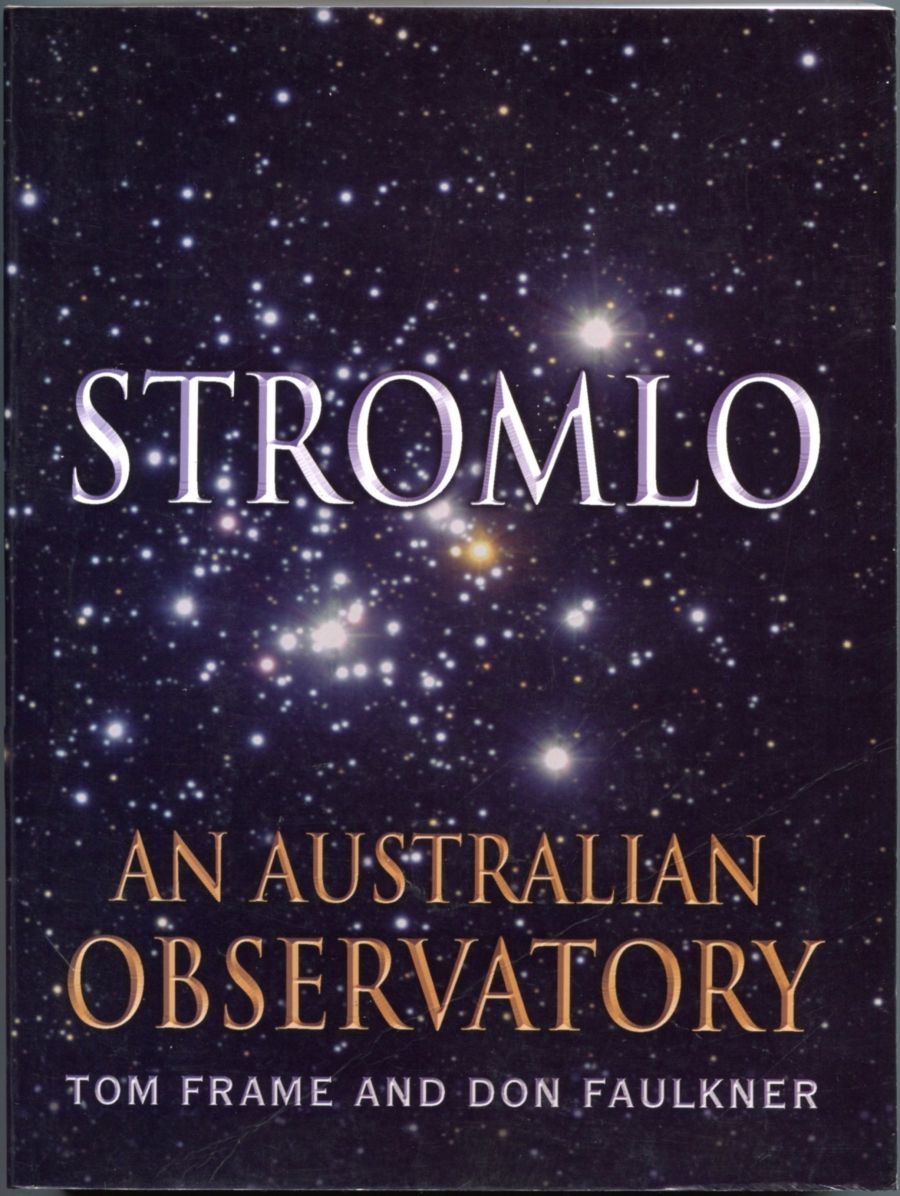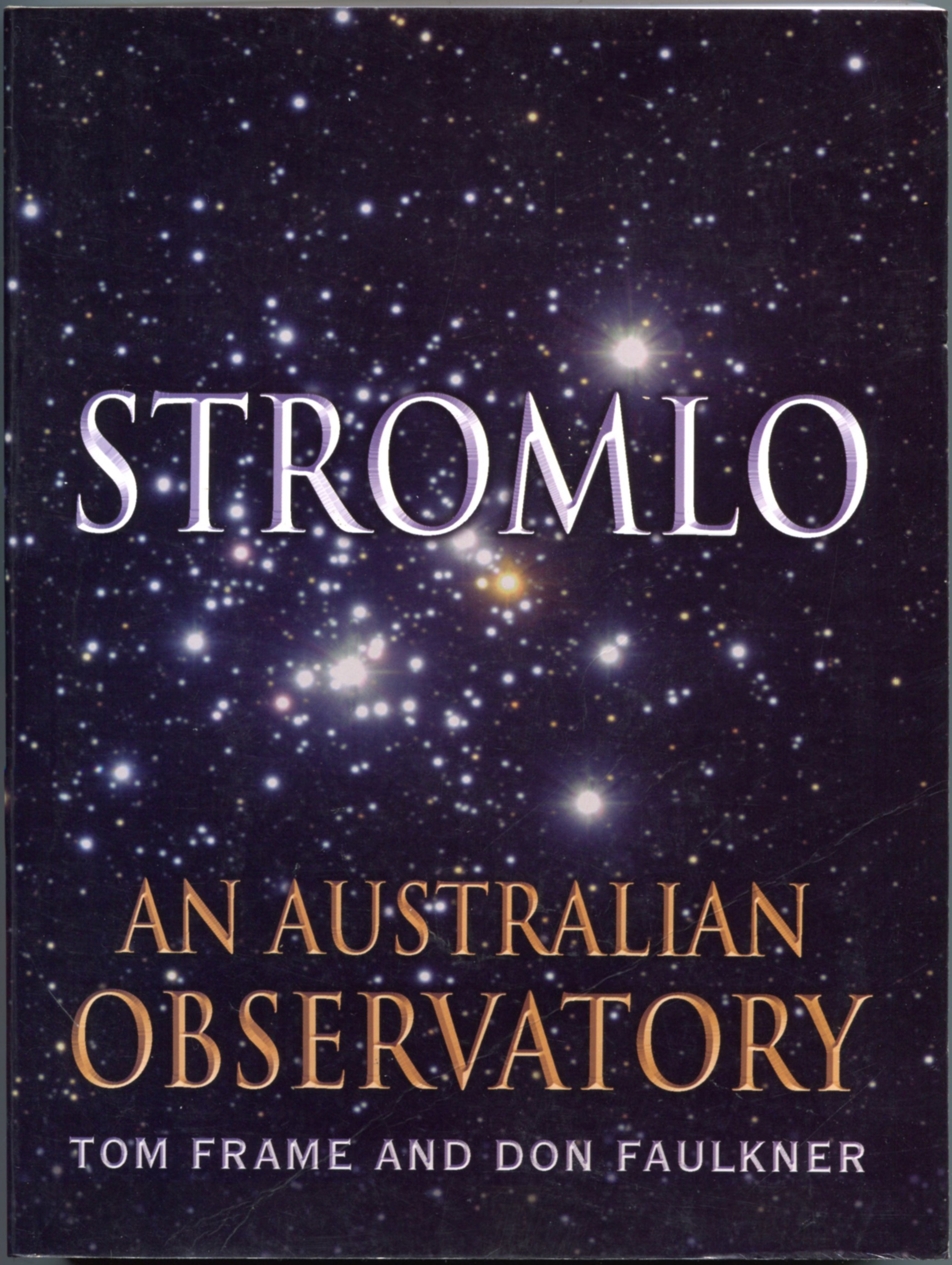
- Free Article: No
- Contents Category: Science and Technology
- Review Article: Yes
- Article Title: Giant Light Buckets
- Online Only: No
- Custom Highlight Text:
In 1972, at the start of my career as a science journalist, I was asked to produce the Commonwealth Day documentary, a portrait of the spectacular Anglo Australian Telescope being built on Siding Spring Mountain. Together with the Australian National University, an independent board was driving the telescope project. I set off to Canberra to interview the infamous Olin Eggen, then director of Mount Stromlo.
- Book 1 Title: Stromlo
- Book 1 Subtitle: An Australian observatory
- Book 1 Biblio: Allen & Unwin, $35 pb, 378 pp
- Book 1 Cover Small (400 x 600):

- Book 1 Cover (800 x 1200):

It was after lunch, and so Professor Eggen had risen. He was large, gruff but helpful, and we recorded a suitably cosmic coda to my programme, describing the immensity of time measured by giant telescopes as they observed ‘like giant light buckets’. Unfortunately, we were confused about American versus other ‘billions’ and got the age of the universe wrong by a factor of ten (ten million million instead of ten thousand million). When the programme went out to thirty-two countries, only one person sent in a correction: a gentleman in Kent who had his slide rule handy at the time. Eggen was amused by the incident and didn’t seem to mind. This was a far cry from his reputation as a remote and taciturn director of the great observatory outside Canberra.
The odd thing about the list of directors whose tenure forms the backbone of this absorbing history, like a succession of kings of England, is how utterly contrasting they are in style and achievement. Richard Woolley is the British eminence (though raised in South Africa), Bart Jan Bok the exuberant Dane, Eggen brilliant but difficult, Don Mathewson entrepreneurial and innovative, Alex Rodgers the old lefty with a fondness for toffs, and Jeremy Mould famous for his calm control.
Woolley came to Stromlo with his wife in 1939. The site had already been used as an observatory since 1911, when a building was put up to house the ‘Oddie’ telescope. The Great War intervened, as did austerity. Not even a director’s house was available for them, so they camped, as did some of the scientific staff, in Hotel Canberra – as long as beds were not required for more salubrious customers. When dwellings were built, they were chilly and remote. Life for Stromlo astronomers was monastic and frugal. Heaven knows what it was like for their poor wives.
Woolley eventually became Astronomer Royal. I had forgotten that he was the source of the notorious sneer that the prospect of space travel was ‘utter bilge’ and learned here that this was probably a product of his warped sense of humour. But Woolley’s greatest achievements were undoubtedly the moving of Stromlo from an exclusively solar to a stellar focus, and to join it with the newly established ANU.
With each director, the output of research papers doubled. The observatory, with its command of the unexplored southern sky, became a key component of the global astronomical network. As Canberra grew from a staging post of a thousand lonely souls into a major capital city, so the encroachment of light became a major problem. Hence the momentous decision to build a 150-inch telescope at Siding Spring mountain, and the imbroglio in which Eggen and the ANU became involved.
So for whom is this book intended? Who needs the detail of instruments and their capacity, committees and their deliberations, institutions and their rivalries? It is not, according to the authors, ‘intended for professional or academic astronomers’, though they hope these will ‘find much of interest’. It is therefore, by implication, meant for those of us with a lay interest in the cosmos and the struggles required to persuade the leaders of this rich country to support mainstream physics, for which Australia should have a box seat.
Dr Tom Frame, now Anglican Bishop to the Australian Defence Force, and Dr Don Faulkner, formerly a director of Education at Mount Stromlo, have insiders’ knowledge and yet have not been distracted by the detail. They could have been more forthright about some of the brawls, especially during Eggen’s time, but they have produced a record that is both readable and authoritative. And timely. In January 2003 the observatory was obliterated in a firestorm nearly fifty years after its former experience with fire damage. Now, with its first female director, Professor Penny Sackett, the challenge is to rebuild an eighty-year-old icon. This, she writes at the beginning of the book, will require all the elements that Stromlo has displayed to date: ‘excellence and determination, invention and discovery, challenge and setback, self-reliance and teamwork, foresight and good fortune, sinew and spirit.’
As part of the reconstruction, the federal government at first appeared to promise $20 million as its contribution. Months later, the budget revealed barely $7 million. Addressing the meeting of the International Astronomical Union in Sydney in August, Minister Brendan Nelson strayed from his notes, as he sometimes does, and, carried away by the spirit of Stromlo, said that if they needed more funds they should just phone him up. I took the trouble to broadcast his impromptu statement to ensure it stayed on the record.
Having read this history, one can understand his impetuousness. I hope Penny Sackett calls.


Comments powered by CComment